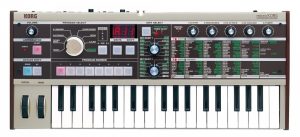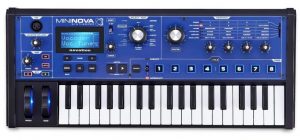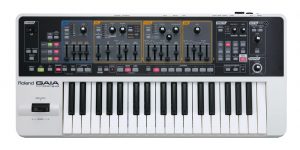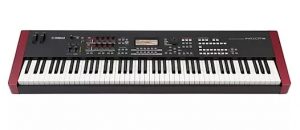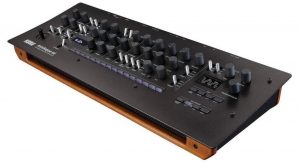For all the music producers and music enthusiasts, who are looking forward to producing ambient music, it is important to look for a synthesizer with great sound effects and decent sound sources, and a lot of reverbs. Finding the right synth for ambient soundscapes is not an easy task and you may have to evaluate several features before hitting the right synth.
The great synth will help create ambient soundscapes and we have done our research in bringing to you the best synth that will render a variety of sonic materials and will allow for excellent audio import for maximum value. It is possible to customize the sounds while producing music with the synths and add a lot of effects to ensure the originality of the music. So, let’s check out the top 5 best synths for ambient music.
Quick Summary: Best Synths for Creating Ambient Music
Also Check: Best Synthesizer Keyboards for Live Performance
Top 5 Best Synths for Ambient Music
#1. Korg MicroKorg 37-key Analog Modeling Synthesizer – Best Overall
| Features | Rating |
| Performance and sounds | 9.5 |
| Connectivity | 9.3 |
| Build Quality | 9.1 |
| Easy to Use | 8.5 |
| Value for money | 9.3 |
This is an excellent Analog modeling synthesizer system that has multi-timbral modes, four voices, and works on a 9V DC power supply. The synth can also work with alkaline batteries that are sold separately. It features 6 types of Arpeggiators and is compatible with Windows 98, 2000, XP, and Mac OS. This synthesizer is an excellent option for ambient music-making. It has mini-keys, simple to use interface, and an exceptional sound-making system, that comes at an attractive price.
This is an excellent vocoder that appeals to every musician. It features a built-in vocoder, and a selectable step arpeggiator and adds a new dimension to recording and performing, without having to add new technologies. External sounds from this synthesizer can be processed with the help of its microKorg filter. There are dedicated knobs to edit different parameters, right at the front panel and the microKorg allows its users to explore the inherent joys of exceptional sound creation.
The microKorg analog modeling synthesizer is one of the bestselling synths and features 37 mini-keys with velocity sensing features. There is also a four-voice analog modeling synth engine with 128 editable presents. There are also five assignable real-time edit knobs this is an 8 band vocoder with the interactive arpeggiator. Its external audio processions system renders three effects, namely chorus, phaser, and ensemble.
What’s Best in Korg MicroKorg?
- With its compact design, it is highly portable and is easy to carry and set up as well.
- There are six types of arpeggio patterns that are built-in
- The length and resolution of the arpeggiator notes are customizable, helping to produce cool patterns easily.
- Offers a retro design with its beige gold body color and wooden side panels.
What’s Lacking in Korg MicroKorg?
- Requires a special interface to record an analog level signal to a computer.
- The synth is not much intuitive for non-keyboardist.
Important: Korg MicroKorg also features in our list of Best Synths for Hip Hop.
#2. Novation AMS-MiniNova Analog Synthesizer – Runner Up
| Features | Rating |
| Performance and sounds | 9.1 |
| Connectivity | 8.8 |
| Build Quality | 9.1 |
| Easy to Use | 8.7 |
| Value for money | 9.3 |
This is an excellent analog synthesizer with a heavily powered mini-synth Nova sound engine. This is an excellent vocoder with a unique VocalTune and a pitch correcting effect. With the help of this synth in hand, it is possible to tweak and warp the sounds in real-time. This analog modeling synthesizer possesses about 256 awesome sounds with an additional free sound pack that we can download upon registration. This also includes about 30 Giorgio Moroder-inspired patches. In this synth, it is possible to layer up to 5 effects per voice and it comes with a three-year warranty from Novation.
Its 256 voices can be controlled easily with its 5 knobs and warp them completely with its 8 animate buttons. Its onboard VocalTune effect helps to recreate iconic vocal sounds from different genres such as hip hop, electronic music, urban, etc. Though the synth has a small footprint, it holds the same incredible and powerful sound engine and synth effects as the UltraNova. The instrument has about 37-mini keys, a USB port, and a MIDI controller that hooks up with the laptop to control the music software and connects seamlessly with other keyboards and sound modules.
The Mininova undoubtedly possesses the best sound engine and synth effects, making it an ideal synth to help with ambient music. It has about 14 waveforms to choose from and its three oscillators help in adding density to the sound and adapt to the music style required. There are about 14 filters, 6 envelop generators, 20 modulation slots, and 3 LFPs in this synth and it can add about 5 effects to each of the sounds such as distortion, reverb, chorus, delay, and compressor.
What’s Best in Novation AMS-MiniNova?
- This is an excellent synth to enjoy high-quality music and it is a compact and super cool synth that mimics the qualities of the UltraNova.
- The synth allows for instant editing and performance control by switching between its 6 positions.
- Features a 37-key keyboard with MIDI
- The live synth feature helps to tweak and warp sounds in real-time.
What’s Lacking in Novation AMS-MiniNova?
- The keys are very small
- There is no sequencer onboard
Important: Novation AMS-MiniNova also features in our list of Best Synths Under $1000.
#3. Roland GAIA SH-01 Synthesizer – Editor’s Choice
| Features | Rating |
| Performance and sounds | 9.5 |
| Connectivity | 9.2 |
| Build Quality | 9.4 |
| Easy to Use | 8.4 |
| Value for money | 9.5 |
The Roland GAIA SH-01 synthesizer features three virtual sound engines onboard and features a dedicated oscillator, amplifier, filter, and sound envelope. This is an excellent synth to create high-quality music and it helps musicians to layer up to 12 simultaneous effects, that includes distortion, delay, reverb, flanger, low boost, and a lot more. The synth also features a 64 note polyphony and a hands-on control panel, all housed in its compact and lightweight body. There are also USB ports in the device to connect flash drives and to establish MIDI and audio connections to the computers.
This synthesizer has a massive sound and is flexible for the hand, and is available at an affordable cost. The control panel is easy and inviting, helping first-timers with great quality sound and music. The signal flow in this synthesizer is easy to grasp and it holds logically arranged knobs, buttons, and sliders. It connects with the computer with a single USB cable and helps in streaming audio directly to the software of choice.
Its USB ports can be of use to transmit and receive data and also help store patches and phrases to the USB memory stick. As the synth delivers exceptional hands-on control, it becomes a joy to use for music students, live performers, musicians, and songwriters. Above all these features, this synth is extremely portable and is also light and compact, to help musicians on the go.
What’s Best in Roland GAIA SH-01?
- The synthesizer is compact and lightweight with 37 full-size keys
- It is capable of producing huge sounds with three analog virtual engines
- The synthesizer features 64 voice polyphony for massive sounds
- It is possible to layer up to five simultaneous effects for ambient music production.
What’s Lacking in Roland GAIA SH-01?
- It does not sound like a piano
- There is no sequencer onboard
#4. Yamaha MOXF8 Music Production Workstation – Great Choice for Ambient Music
| Features | Rating |
| Performance and sounds | 9.4 |
| Connectivity | 9.2 |
| Build Quality | 9.1 |
| Easy to Use | 8.6 |
| Value for money | 9.2 |
This synth workstation comes with an XF sound quality with expandable flash memory. The keyboard workstation features a performance mode to enhance its creativity. The synth also has an advanced computer integration system and is also very portable. The MOX series from Yamaha comes with the latest MOTIF XF technology by adding more sounds, effects, and a Flash board option slot. It is compatible with MOTIF XF, MOX data, and a huge collection of sound and sample libraries that are available instantly. The synth is portable, affordable, expandable, and is compatible with a range of other products. The instrument brings the MOTIF music production software to a range of new producers and musicians.
The new MOTIF series has an XF sound engine and MIDI keyboard controller with extensive VST and DAW controls. The synthesizer also features a USB interfacing and audio system along with an onboard sequencing and software bundle. The instrument features a rich collection of instrument voices, that includes strings, electric pianos, wind instruments, basses, guitars, drums, and orchestral sounds.
The MOTIF XF sound engine features a total of 741 MB of waveforms and 136 new voices that include sounds of the organs and other musical instruments. The device features an interactive Arp engine, that plays simple chords and notes to inspire one’s creativity. This sound engine has about 256 preset and helps in rendering performances in a range of music styles such as hip hop, rock, jazz, etc.
What’s Best in Yamaha MOXF8?
- It features an exceptional MOTIF XF sound engine with a total of 741 MB waveforms.
- There is a unique performance mode to combine multiple voices.
- Its advanced computer integration makes the synth an ideal music production unit.
- The synth features comprehensive controls for easy operation.
What’s Lacking in Yamaha MOXF8?
- The synth doesn’t come with a bag
- The keys can have a harder feel and more responsive for quick note changes
#5. Korg Minilogue XD 4-Voice Synthesizer – Amazing Alternative for Ambient Music
| Features | Rating |
| Performance and sounds | 9.1 |
| Connectivity | 8.7 |
| Build Quality | 8.9 |
| Easy to Use | 8.6 |
| Value for money | 9.1 |
This is an excellent four-voice analog and digital synthesizer with two VCOs per voice. This is an excellent digital multi-engine that comes with a 16-step polyphonic sequencer and four-voice modes. This is a four-voice synthesizer with two analog VCOs and a customizable digital multi-engine with built-in stereo digital effects. It features a poly chain function that allows the users to connect with another XD module or minilogue keyboard, so that they can operate polysynth with a total of up to eight voices.
This synth has fine-tuned every single parameter based on the requirements of musicians and from warm pads to fat basses the Korg monologue covers every single music scenario. This sound engine is equipped with three different types of sound generators such as noise, VPM, and open-source user oscillators. It features studio-grade digital effects with a deep and powerful sound design platform. There are three effects in this synth, namely reverb, delay, and modulation effects and they can be used simultaneously as well.
The synth is featured with a studio-grade digital effects sound engine that makes use of a 32-bit floating point. The three effect types can be used simultaneously, allowing users to choose from a range of variations such as ensemble, chorus delay, etc., from a range of other great reverb types.
What’s Best in Korg Minilogue?
- The synth is built on an open-source environment to render great potential beyond the limits
- This polyphonic step sequencer has several factories present that is built for live performances.
- It can be used in conjunction with XD series for poly assignment settings
- Comes with loads of useful software to create exceptional music.
What’s Lacking in Korg Minilogue?
- The synthesizer doesn’t come with rack ears
Must Read: What to Consider While Buying a Keyboard Synthesizer?
Difference Between a Synthesizer, Piano, and Keyboard
Because a piano is a percussion instrument and an organ is a woodwind instrument, the sounds that they make when they are played are very distinct from one another. An organ, on the other hand, may be adjusted to sound like a wide range of wind and reed instruments, whereas a piano can only ever provide the sound of a piano. In addition, to sustain a particular note on a piano, the key to that note must be depressed multiple times. In contrast, when a key is depressed on an organ, the note will continue to be sustained for as long as the key is depressed.
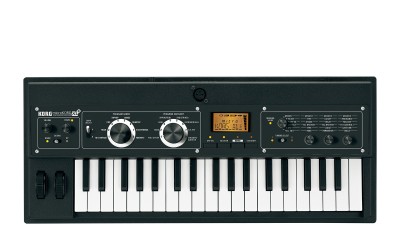
In the same way that an acoustic piano has black and white keys, keyboards too have a huge number of pre-programmed sounds and samples at their disposal. Synthesizers may have the appearance of keyboards, but they are distinct in that they can imitate the sound of virtually any instrument while yet producing their distinctive tone. Synthesizers are capable of producing their sounds, but keyboards are unable to do so.
Synthesizers were initially conceived as the most fundamental approach to replicating a genuine instrument using only the technology that was available at the time. These “analog” synthesizers went on to create their fan base and can be heard in a great deal of critically acclaimed music from the 1970s and 1980s. These days, there are a lot of various methods by which synthesizers can produce sounds, and some of them even include an internal library that has hundreds of different voices that are instantly ready to be used. However, they are not instruments with built-in accompaniment sounds like keyboards and organs; rather, they are typically utilized as a tool for the production of music, either live on stage or in a studio with the assistance of a professional synthesizer.
What Does a Synthesizer Do and How Does It Work?
An electrical instrument known as a synthesizer is one that generates audible sound through the use of some type of processing, either digital or analog. The majority of musical synthesizers, according to their namesake, attempt to artificially duplicate, or “synthesize,” the sounds of traditional acoustic instruments, such as those mentioned above.
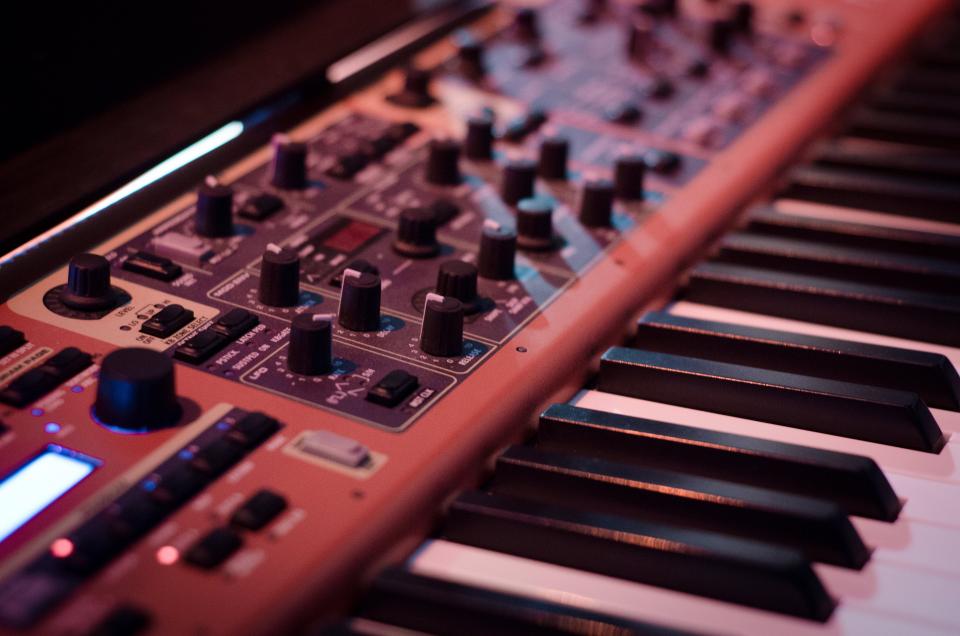
A synthesizer is an electronic device that generates sound by simulating the vibrations produced by acoustic instruments through the use of electrical signals. If you are just starting with synthesizers, they could look and feel more complicated than they are, but it is much simpler than you might think to learn the fundamentals. Let’s get started with the fundamental components that make up audio synthesis. Synthesizers that try to imitate the sounds of acoustic instruments are not capable of producing sounds in the same manner that real instruments can. Many electronic synthesizers, for instance, have settings that are labeled “piano” which indicates that those settings will produce a sound that evokes an 88-key classical piano but that is produced by a series of electronic tone generators. Another common example is that many electronic synthesizers have settings that are labeled “organ,” which indicates that those settings will produce a sound that evokes. The synthetic instrument does not involve any of the physical motions that are required for the production of sound by a piano, such as a felted hammer striking tuned strings.
The Secret Behind Choosing the Best Synthesizer to Create Exceptional Music
When it comes to synthesizers, there are generally two major options, namely the analog and the digital synth. Most music producers feel that analog synths create warmer music than digital synths and choosing between the two is important as the type of synthesis that is employed in the instrument has a direct influence on the sounds that it creates. It is also possible to get digital synths with analog modeling technology. Apart from choosing between the two, there are also other synthesizer options to look for.
1. Speakers
In your journey of creating high-quality ambient music, be sure to pick up a synth with a built-in speaker. Speakers are useful with synths that don’t have a mixer, monitor, or sound card to route the audio. Also, synths with speakers are more liberating than using headphones.
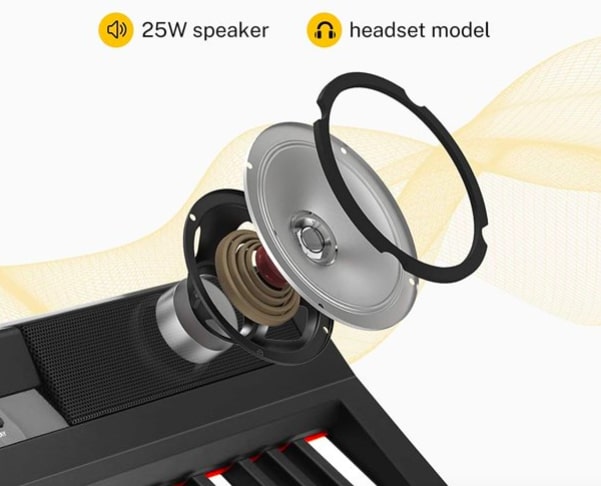
2. Portability
Though large and gigantic synths look cool, they will not offer easy access. Thus, if you have limited audio space, then consider buying a compact synth that is easy and ready to use at all times. If it is small enough to be carried in a bag, there are high chances to create high-quality music, even out of the home.
Check out: Best Digital Pianos For Advanced Players
3. Sequencer
Try to buy a synth with a sequencer as this will help in writing a melody or a bassline, note by note, and store in its onboard memory, to leave the hands free for resonance and to add effects.
Things to Consider While Buying a Synthesizer
You couldn’t pick a better time to buy your first synthesizer than now. Because of their decreased complexity, smaller size, and lower cost, synthesizers are now more beginner-friendly than ever before. You may get a synth that can be used to compose music for a cheap price, whether you wish to build your own or replace Ableton Live’s software instruments.
However, if you are just starting, it’s easy to feel overwhelmed. Some synthesizers are so stripped down that they don’t even look like synthesizers, while others may have more features than you need especially if you’ve dabbled in software or programs. For newcomers to the world of synthesis, the single most important thing to remember is that cheap does not equal simple use.
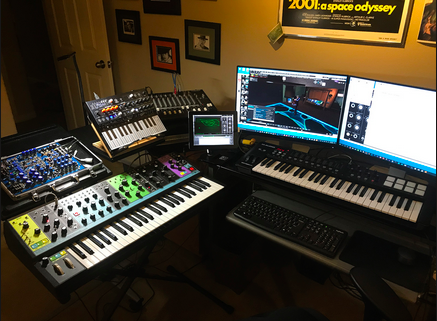
- Do not spend more than $200 on anything if you are a complete beginner. It’s tempting to think you can spend all your money on a high-end synth and never need to buy another one, but that strategy can backfire. The more expensive the synth, the more capabilities it is likely to have; but, if you’re just starting, you’ll probably find that you spend hours just browsing the menus instead of making music. Starting with a simple synth that costs between $50 and $200 can provide you with a good foundation for mastering more complex techniques.
- If you know your way around software synths but want to branch out into new creative territory, spending more than $500 is probably not worth it. Companies like Roland, Korg, and Arturia have made great steps in recent years toward the manufacture of more reasonably priced gear, and most of it is gear that you will be glad to keep around even if you upgrade to a more expensive model.
- You should seriously consider getting a synth that has a built-in sequencer. If this is your first time buying a synthesizer, you may have little to no experience with the keyboard. In this scenario, you should examine your synth’s manual to determine if it features an internal sequencer. This will allow you to enter a melody or bass line into the onboard memory one note at a time. This will let you focus on other tasks while your pattern repeats in the background, such as adjusting cutoff and resonance (crucial for producing an acid-like sound) or applying effects.
- See if it’s too big of a size. Large, sleek-looking synths are impressive to take a look at, but if they are difficult to access, they will likely go unused. In the early stages of your career as a music producer, you may have to make do with a smaller studio. Instead of setting up and putting away your synth every time you want to use it, you can just buy a portable synth and leave it out on your desk. If it can be easily carried, you’ll be more likely to take your musical creations with you wherever you go.
- You could look into purchasing a version that has a speaker. It is highly doubtful that you will have a mixer, soundcard, or monitors to transport the audio from your synth if you are just curious about synths and want something to noodle on. If that’s the case, you might want to look into getting a synth that has a speaker. The sound won’t be great, but it’ll be more freeing than listening with headphones. Put on some headphones whenever you go out in public; no one on the train cares to hear the bassline of your latest techno song.
- Which is better, analog or digital? Some listeners prefer the “warmer” sound of analog synths, while others aren’t able to tell the difference between analog and digital synths. The sound of a synthesizer is secondary to learning how to play it for the first time. However, the option between analog and digital synthesis remains crucial, as the synthesis method employed by the instrument may have some bearing on whether you end up programming your own sounds into it or sticking with the presets.
- Subtractive synthesis, the form most commonly associated with analog synthesizers, is widely regarded as the simplest and most logical type of synthesis to master. However, even for seasoned musicians, digital FM synthesis can be a daunting concept. You can learn the basics of synthesis quickly if you invest in a subtractive synth with well-labeled and easily-accessible oscillators, envelopes, and filters. The same guidelines apply to both traditional analog synthesizers and digital synths that utilize analog modeling technologies.
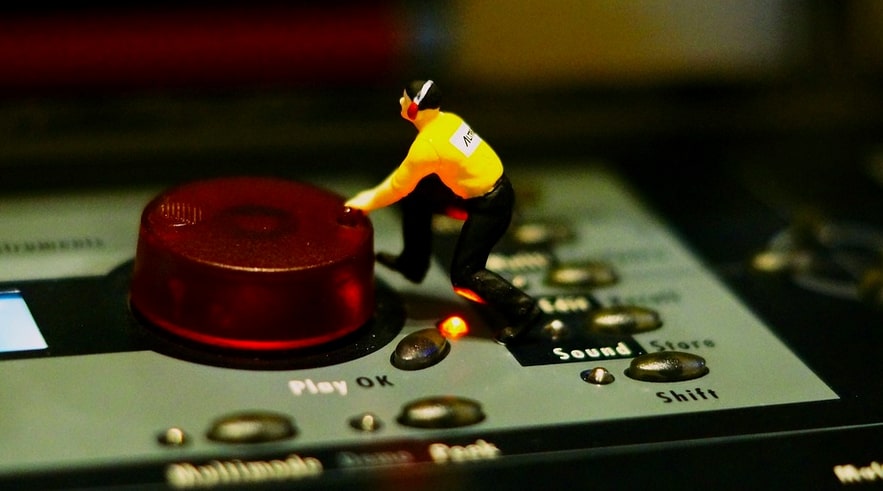
Check out: Best Budget Synths Under $500
What Should You Know Before Using a Synthesizer?
Those who have a passion for classical music and wish to improve their talents can do so by playing a digital piano, which can be utilized for both practice and live performances. Some people believe that an acoustic piano is the only instrument that should be used for playing classical music because of its one-of-a-kind tone and appearance. However, more recent enhancements to the instrumentation make it possible for you to continue appreciating the classics even as you move into the digital age.
Given the rapid growth in the quality of digital pianos, many classical musicians are uncertain as to whether or not they will be able to locate a digital piano that is as excellent as the greatest acoustic ones.
Can Beginners Use Synthesizers?
If you’re interested in making music but haven’t yet gotten started, learning the basics of synthesis is a breeze and won’t take long at all. You may always rely on the defaults, and making your first patch shouldn’t take you more than 15 minutes at most. Before acquiring a synth, it can be helpful to have a clear idea of the type of synthesis you intend to utilize. They serve as useful binaries for distinguishing between analog and digital synthesis. Most analog circuits use a subtractive approach, where a filter is placed in series with an oscillator’s output.
Frequently Asked Questions
1. Do Different Synths Generate Distinct Timbres, Harmonics, or Other Sounds for the Same Waveform?
The fundamental waveforms of analog synths contain some variations and abnormalities, but not enough to completely alter the sound of the waveform on a different synth. To learn more about the oscillators’ core, you can always feed the signal into your DAW and examine the waveform on an oscilloscope. You can also look at the tone of YouTube videos that perform a deeper analysis of the oscillators.
2. What is the Difference Between a UAD Interface and Other Options for Recording Synths?
Simply said, the most transparent signal in and out of your speakers comes from a good audio interface. When you look at high-end interfaces, you will undoubtedly discover that your speakers no longer have an aural shield. However, the majority of them are pricey because of the quantity of I/Os, thus the Audient ID4 and Antelope products are both highly recommended even though you can get extremely fantastic sound there.
3. Where Might Someone Begin Their Study of Synthesizers?
Before learning to recognize simple waveforms without seeing them, you should understand how everything is routed. Learn how source and destination affect modulation. Make bass sounds for a week, then pads, then drums. This method teaches you to evaluate a sound before programming it.
4. Why Do Professionals Seem to Favor Physical Synths Over Software Synths?
In addition, if the hardware synth is analog, it will sound easier and richer, especially the filters and modulation sources. Hands-on work makes it easy to lend that human feel to your “automation.” Having said that, soft synths today are of really high quality, and you can always buy a MIDI controller and map it to control one.
5. If the Same Waveform is Played on Different Synths, Will the Chord Progression Be the Same?
Though basic waveforms on different synths may sound slightly different due to subtle variations, this is not the case with analog instruments. Sending the data to your digital audio workstation (DAW) allows you to view the waveform on an oscilloscope, and there are also many tutorials on YouTube that provide a more in-depth examination of the oscillators.
Our Recommendation
The best fit here is Korg MicroKorg 37-key Analog Modeling Synthesizer because each user can experience the joy of electronic sound design with microKORG’s easy controls and front-panel legend. The Microkorg Synthesizer/Vocoder debuted in 2002. The Microkorg combined mini-keys, battery power, an easy-to-use interface, and superb sound.
- Features 37 full-size keys, providing an expressive and dynamic playing experience
- Equipped with Korg's XMT Sound Engine, it delivers authentic analog modeling synthesis for rich sound creation
- Includes a built-in vocoder, allowing for unique vocal effects and robotic voice transformations
Specifications
- The Microkorg’s portability makes it easy to play anyplace. All settings are on the control panel, thus no menus are needed.
- UP, DOWN, ALT1/2, Random, and Trigger are preset arpeggio patterns. Changing note length, resolution, and step sequencer on/off toggle creates distinct patterns.
- The Microkorg’s AUDIO IN1 jack can be used to plug in a microphone and utilize it as a potent vocoder, which modulates the oscillator’s output based on vocal input.
- The Microkorg’s beige-gold body and wooden side panels evoke retro-pop flair.
Check out: Best Digital Pianos Under $2000
You Might Also Like
- Best Digital Pianos Under $5000
- Best Synthesizer Keyboards for Live Performance
- Best Budget Synths Under $500
- Best Synths Under $1000
- Best Synths for Hip Hop
Final Words
Another important consideration while choosing synths is the budget. If you are a novice musician then do not buy high-end synth spending loads of money, as you will only be spending hours browsing through menus, instead of making high-quality music. We hope our guide helps you in finding the best synth for ambient music.


